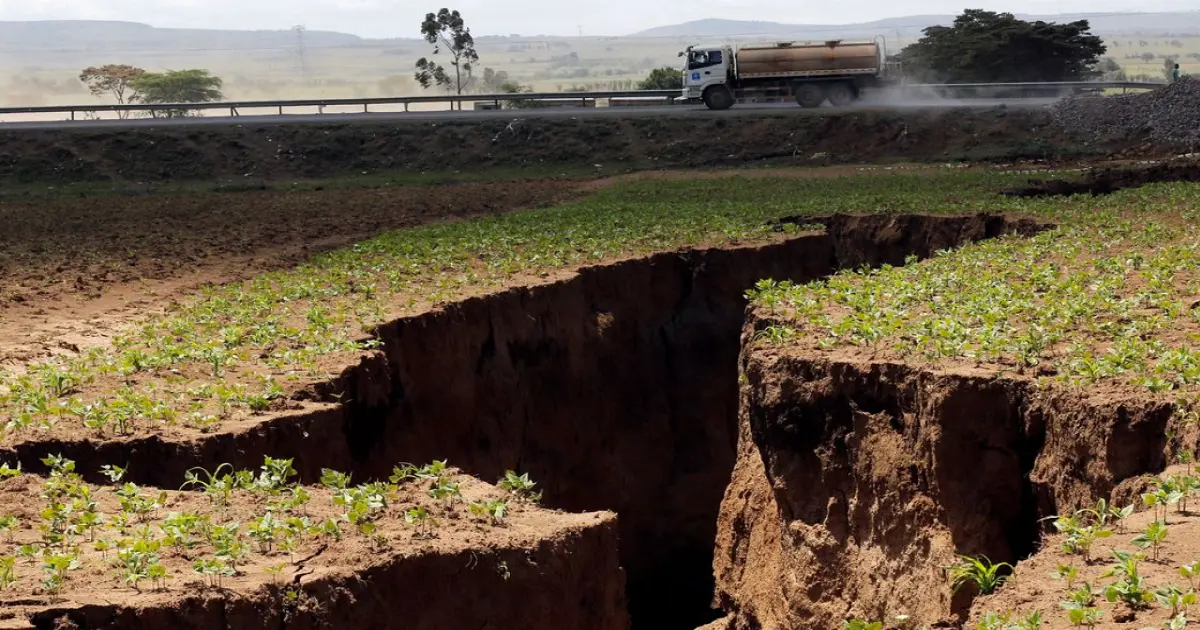Despite its varied landscapes and extensive cultural heritage, the African continent has a geological secret: it is slowly fragmenting. Behind this interesting occurrence is plate tectonics, the mechanism responsible for continental movements. This article explores the captivating story of the breakup of the African continent, uncovering forces of nature that shaped its landscape.
The Geology of the Continent of Africa
The African Plate, a sizable tectonic plate that encompasses both the continent and the nearby ocean floor, is where the African continent is located. Surrounding the plate are several additional plates, including the Antarctic Plate to the south and the Eurasian Plate to the north. As a result of the interactions between these plates, the continent of Africa’s topography and geological history have been formed.
The Principle Behind Plate Tectonics
The scientific theory of plate tectonics explains the movement of the Earth’s lithosphere, which is split into a number of big and minor tectonic plates. Due to these plates’ motion, continental drift occurs, which in turn triggers a number of geological events like earthquakes, volcanic eruptions, and the formation of mountain ranges.
Southeast Rift System
The East African Rift System (EARS) is a large geological rift that runs from the Red Sea to Mozambique, covering a distance of more than 3,000 kilometers. It is a typical instance of continental rifting, in which two tectonic plates split apart. It is thought that the rifting process is the initial phase of a new ocean emerging.
4.1 The Process of Formation
The shifting of tectonic plates under the surface of the Earth is still forming the East African Rift System now, after millions of years of creation. The Earth’s crust becomes weaker as the plates move apart, which causes faults and fractures to form.
4.2 Present-Day Geologic Activity
Along with seismic activity and volcanic eruptions, geological activity in the East African Rift System also includes. Some of the active volcanoes in the area are found in the Great Rift Valley.
Rift Valley in Africa
East Africa is home to the African Rift Valley, a notable geological formation that includes numerous rifts and valleys. This extensive system of trenches is a physical example of the tectonic forces at play beneath the Earth’s surface.
5.1 East African Rift Valleys
Several separate rift valleys, each with distinctive geological features, make up the East African Rift Valley. The Western Rift Valley, the Eastern Rift Valley, and the Southern Rift Valley are a few of the well-known rift valleys.
5.2 The Great Rift Valley
Located in East Africa, the Great Rift Valley is the most noticeable and well-known rift valley. It extends across multiple nations as it travels from the Red Sea to Mozambique. By studying the spectacular scenery in this valley, we can gain an understanding of the geological history of the African continent.
Future Continents and Rifts
Although the idea of continents splitting might seem unsettling, it is a normal occurrence in the Earth’s geological cycles. The process of continental breakup connects the Wilson Cycle, which defines the life cycle of supercontinents. It entails an ongoing cycle of continental collision, disintegration, and reassembly.
6.1 The Wilson Cycle, in
The Wilson Cycle starts with the creation of a supercontinent and ends with its fragmentation into smaller continents as a result of tectonic processes. Over the course of millions of years, these continents drift away and then eventually reunite to form a new supercontinent.
6.2 The African Continent’s Future
Although the division of the African continent is already underway, it will take time. It takes millions of years for this geological process to be finished. A new ocean that divides Eastern Africa from the rest of the continent may arise as the East African Rift System widens even further.
Consequences of the African Continent’s Split
The climate, economy, and culture of the continent of Africa will all be significantly impacted by its division.
7.1 Effect on the Environment
Regional climates, wildlife migration patterns, and ecosystems may all be impacted by the division of the African continent. Marine life and coastal areas may suffer as a result of the creation of a new ocean.
7.2 Financial Impacts
The division of the continents may open up new commerce and resource development opportunities. However, it could also pose difficulties for the expansion of infrastructure and political boundaries.
7.3 Changes in Culture
Cultural divergence and the creation of various identities may result from the division of regions caused by continental splitting. The cultural landscape of Africa might change as a result of this process.
Science and technology’s function
Technology and scientific advancements are essential for comprehending the geological processes that shape our planet. Scientists can more effectively monitor and foresee natural events, such as continental rifting, thanks to modern techniques and study.
Conclusion
As a geological wonder, it takes millions of years for the African continent to split. Because of plate tectonics, the East African Rift System is slowly separating Eastern Africa from the rest of the continent. This process will significantly impact the environment, business, and culture of the area. Meanwhile, science and technology will continue to be crucial in unlocking the mysteries of our ever-changing planet as we see this evolution.

